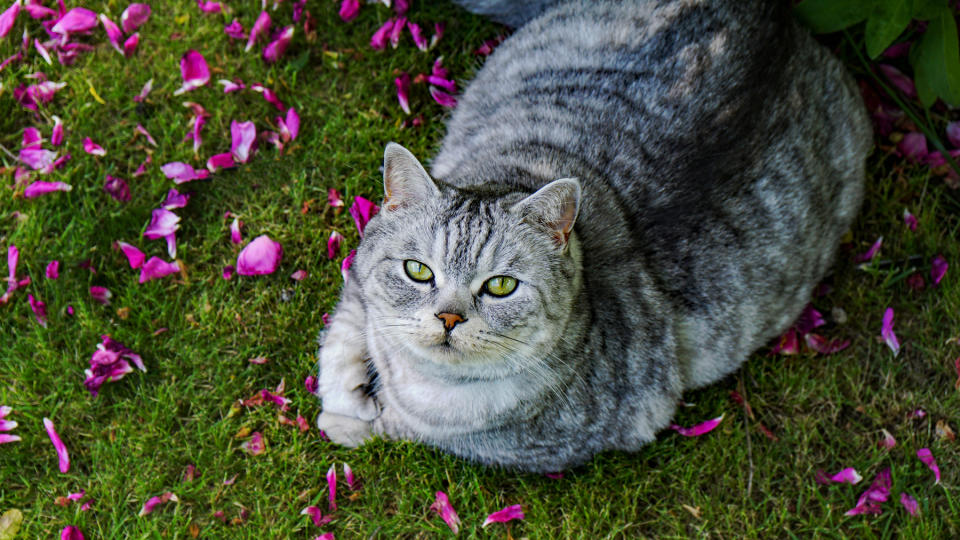Seven things you didn’t know about the British Shorthair cat

You won’t struggle to find a British Shorthair cat in the UK as they are one of, if not the most, popular pedigree cats there. They are chunky yet striking feline creatures with fun and playful characteristics that outlast their kitten years into their adulthood. They remain fun-spirited as they age but get calmer, making them great with all kinds of people.
These cats will fit right into your home and will happily be played with by children as they are gentle and calm in nature. They can also keep to themselves and enjoy the best cat toys on their own. They are ever so loyal and will play a key part in any family that welcomes them in.
There is lots to be said about this very likable breed so let’s get into these seven facts you didn’t know but need to know about the British Shorthair cat…
1) They are big cats
The British Shorthair cat is a heavy-muscle and heavy-boned breed. While they aren’t as large as the Ragdoll or Main Coon breed, they aren’t the kind of pet cat you’ll easily scoop up when you fancy a cuddle and they’ll need adequate amounts of the best kitten food from the get-go to ensure they can fully develop into their rounded and chunkier build.
2) They are one of the oldest cat breeds
American cat food brand Purina say that this popular feline breed is said to date back as far as the first century AD when the Romans had them imported to use them for getting rid of mice, insects and snakes in their camps. If this is true, it would make the British Shorthair cat one of the oldest identifiable cat breeds in the world.
3) They are slow to mature
British Shorthairs are slow to mature and this applies to both their physical and mental attributes. You can expect to see them reach their full size and weight between the ages of three to five years old and their kitten-like traits, such as being high energy, often dwell into adulthood. However, don’t worry about not being able to handle a British Shorthair’s energy as they do mellow out after they’ve fully matured and are very easy to spend time around.

4) They used to be blue
The British Shorthair was formerly referred to as the British Blue when they were selectively bred to be that color (a blue-gray shade of fur) in the 19th century. However, now they come in a variety of colors.
5) They make a great family pet
When it comes to picking a cat that will fit right into your family home, you really can’t go wrong with the British Shorthair cat. There is a reason why they are such a popular household breed: the British Shorthair cats are known for having kind, loving natures, being slow-tempered, and showing loyalty to their owners. If you have kids in your home, you’ll certainly want a cat like the British Shorthair who is laidback enough to handle the noise and chaos at times but also one that’s gentle and won’t retaliate aggressively if a small kid is driving them up the walls…quite literally.
6) They require minimal grooming
In case the name didn’t suggest this for you, British Shorthair cats have, well… short hair, therefore, their coat only needs minimal grooming (around once a week). The only time these cats’ coats may require some more TLC is over seasonal shedding periods which will require you to remove any loose hair unless you don’t mind it coating your floors and furniture.
7) Overall, they have good health
As with all cat breeds, certain kinds will be more susceptible to health issues. Fortunately for the British Shorthairs, they don’t face many breed-related health risks. If looked after well by their owners, these cats are known for typically living long and healthy lives - this could span around 14-20 years according to LV Pet Insurance.
LV also identify the few health issues that are worth looking out for with this breed such as Hyperthyroidism, this especially is more of a risk for older British Shorthairs who may develop an over-productive thyroid hormone, essentially, causing havoc with their metabolism. They also have a genetic makeup that puts them at greater risk of heart disease and it’s also true that shorthair cats are more susceptible to developing cataracts which can lead to blindness in older cats. These are all worst-case health risks and all part and parcel of raising a pet, but generally speaking, you shouldn't find yourself taking your British Shorthair to the vet very often.
Looking for an answer to ‘what breed is my cat?’ we can help you get to the bottom of this query. Or find out here which cats make our guide to the best indoor cat breeds.

